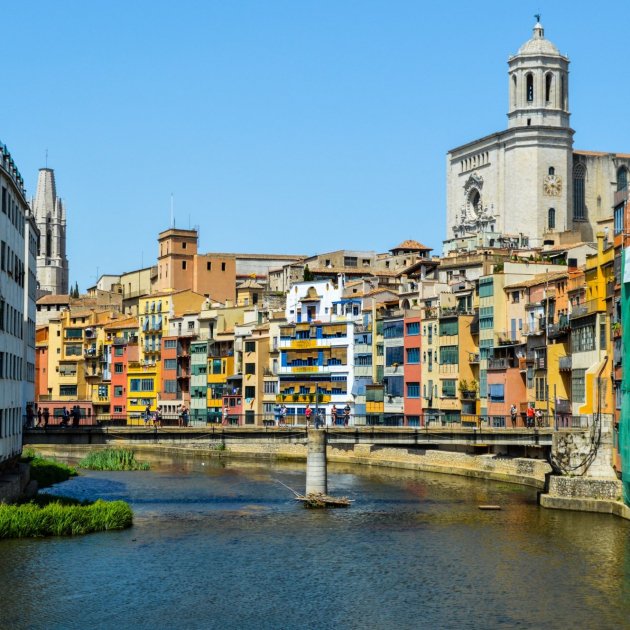Girona is a mid-sized city full of interesting landmarks and history, north of Barcelona and south of the French border, and a perfect choice for a day trip out of Barcelona. Here, we'll tell you everything you need to know to be ready for a trip to Girona.
🖼️ Figueres and the Teatre-Museu Dalí: everything you need to know for a Salvador Dalí day trip
⛰️ Day trip to Montserrat: history, transport, things to do and much more!
How to get to Girona
Girona is about an hour outside of Barcelona by rail, and the cheapest tickets usually cost about €8-9 each way depending on departure time, if booked in advance. It's also reachable by car and bus (bus tickets being often more expensive than rail), and has its own airport, Barcelona-Costa Brava Airport, though that will not be the best option for many travelers.
Why you should visit
There are many reasons to visit Girona, either as a day trip from Barcelona or for a longer stay. Compared to Barcelona, Girona is quieter and less commercialized, while still providing great opportunities to experience Catalonia's rich history and culture. Prices are also significantly lower than in Barcelona, if you're hoping to make your trip on a budget.
The area around Girona is beautiful, and you can get a wonderful view from on top of the city's walls. It is also situated between Barcelona and the French border, so for travelers planning to see both France and Spain, it's a perfect midway stop.
What to see in Girona
One of Girona's most famous landmarks is its historic cathedral, construction of which was begun in the 11th century, and fully completed in the 18th century. Due to its long construction, the cathedral is a unique combination of Romanesque, Baroque, and Gothic architectural styles. It's especially notable for its Gothic-style nave (the main interior of the church), which is the widest of any church in the world. The cathedral also houses a museum of religious artifacts, notably including an intact 11th-century tapestry depicting the Christian creation myth.
The cathedral may be familiar to fans of HBO's Game of Thrones, where it stood in for the Great Sept of Baelor for multiple episodes of the record-breaking show. Game of Thrones fans may also want to seek out the Arab Baths and Plaça dels Jurats, among others; many locations in the city doubled for parts of the fictional city of Braavos.
The walls of Girona, accessible by stairs, are also worthy of a visit. Originally built by the Romans, then renovated and expanded by Charlemagne when the Franks took the city, the walls are an incredible piece of surviving 9th century construction, and provide stunning views of the city. The old quarter of the city on the whole is very well-preserved.
There are also the Houses of Onyar, overlooking the Onyar River, which runs through the city. The colorful, uneven collection of facades is emblematic of the city, and they can be viewed from many of the bridges that cross the river.
If you're planning on visiting during spring, you may want to plan your visit to coincide with the Temps de Flors, or 'flower season', an annual festival that takes place during the second week of spring. During this week, whole streets will be filled with more than a hundred individual flower displays, transforming the city into a colorful work of art.
History of the city
Girona is a city with an extremely rich history; it was originally a city of the Ausetani, an ancient Iberian people. When Catalonia was part of the Roman Empire, a citadel was constructed there, some parts of which still survive, and it became an important center of the region, connected to the port of Empúries. During its early history, the city was called by the Latin name of Gerunda.
Like Barcelona, prior to the Jewish expulsion from Spain in 1492, Girona had a thriving Jewish community, artifacts of which can still be seen in the historic Jewish quarter, which now houses a Jewish history museum.
Due to its position as a defensible walled city near the border between France and Spain, Girona has been besieged and captured many times over its centuries of existence; it has undergone 25 sieges, and been captured seven times. During the Peninsular War, the city held out for half a year under siege by 35,000 Napoleonic troops.
